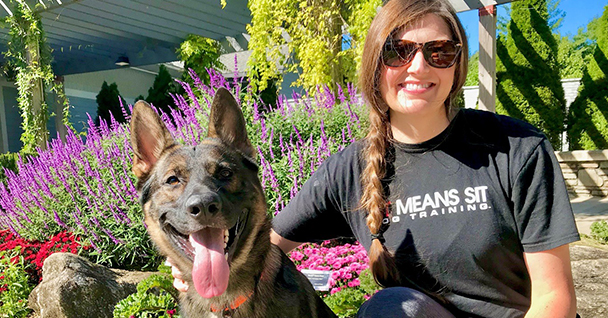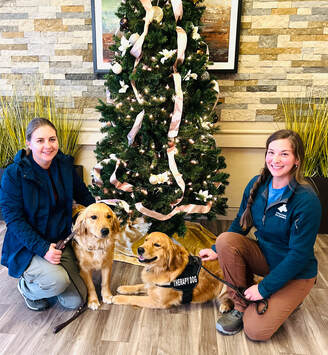Just how to Select the Right Approach for Successful Dog Training
Just how to Select the Right Approach for Successful Dog Training
Blog Article
Essential Tips for Successful Dog Training: An Overview for Pet Dog Owners
Reliable pet training is a complex process that needs a strategic method tailored to both the family pet's personality and the proprietor's objectives. Recognizing just how to navigate these challenges can significantly improve the training experience, eventually changing the connection between proprietor and dog.
Understanding Canine Actions
Recognizing pet actions is necessary for efficient training and fostering a harmonious partnership between pooches and their proprietors. dog training. Pets communicate mainly via body language, vocalizations, and actions, making it crucial for owners to analyze these signals precisely.

Socializing plays a significant duty in pet behavior; direct exposure to various environments, people, and various other pets can dramatically affect a pet's personality. In addition, elements such as breed qualities and private personality should direct training methods, as some types might have certain behavioral qualities that require customized methods. By recognizing these elements, proprietors can create an encouraging atmosphere that encourages favorable behavior, causing effective training end results and a deeper bond with their pet dogs.
Establishing Regular Commands
Efficient interaction with your pet begins with developing regular commands. This fundamental element of training is essential for fostering understanding in between you and your family pet. Uniformity in the commands you make use of makes sure that your pet dog can accurately link particular words or phrases with the desired behaviors.
When selecting commands, select clear, distinctive words that are very easy to claim and separate from each other. Stay clear of utilizing similar-sounding commands that might confuse your canine. Making use of "rest" and "remain" is suitable, however "rest" and "hit" could lead to misunderstandings.
Furthermore, preserve the very same tone and quantity for every command. Dogs are delicate to vocal hints, so varying your tone can produce complication.
It is equally vital to guarantee that all relative get on the exact same web page pertaining to the commands used. A united front in command use will certainly prevent combined signals and enhance the learning process.
Positive Reinforcement Methods
The power of positive reinforcement in canine training depends on its capacity to encourage wanted behaviors via rewards and praise. This method is grounded in the concept that behaviors followed by positive outcomes are most likely to be duplicated. By including positive reinforcement right into your training program, you can properly shape your pet's habits in a positive way.
To carry out favorable reinforcement, it's crucial to identify what inspires your pet, whether it be deals with, toys, or verbal appreciation. When your canine carries out a wanted activity, such as remaining on command, quickly reward them with a treat or love. This association in between the command and the favorable outcome enhances their understanding.
It's vital to timing the rewards appropriately; delivering the reinforcement within seconds of the preferred actions assists your pet why not check here dog make the connection (dog training). Additionally, consistency is crucial-- guarantee that all member of the family make use of the same commands and reward systems to avoid confusion

Progressively, you can decrease the frequency of deals with as your dog learns the behavior, transitioning to praise or intermittent incentives. This technique not only fosters a strong bond in between you and your canine yet also advertises a favorable knowing environment, making educating a satisfying experience for both.
Socialization and Communication
Continually exposing your pet dog to a variety of settings, individuals, and various other animals is important for their social growth. Socializing should begin early, ideally throughout the critical home window of 3 to 14 weeks, when young puppies are most receptive to new experiences. Nevertheless, older canines can additionally benefit from ongoing socializing initiatives.
Introduce your pet dog to different settings, such as parks, pet-friendly stores, and metropolitan locations. This exposure aids them adjust to numerous stimuli, reducing anxiety and worry actions. Encourage favorable communications with other pet dogs and people, ensuring that these experiences are controlled and risk-free to promote confidence.
Utilize organized playdates with well-mannered dogs, as this can boost your canine's social abilities and show them ideal habits. Obedience courses and training sessions additionally supply outstanding possibilities for socializing, allowing your dog to connect with others in a supervised setting.
Display your pet dog's body movement throughout communications, as this will certainly help you evaluate their convenience level. Progressively increase direct exposure to more difficult scenarios while ensuring that each experience declares. A well-socialized pet dog is most likely to exhibit well balanced actions, making them a happiness to have in any kind of setup.
Resolving Typical Training Challenges
Every pet proprietor will encounter training obstacles at some time, no matter of their canine's age or socializing level. Identifying typical problems such as stubbornness, interruptions, and fearfulness can assist in creating effective methods for enhancement.

Gradually present diversions as the pet becomes much more skillful in commands. Short, frequent training sessions are additionally efficient in keeping attention.
Fearfulness can prevent a my link dog's learning process. Progressive desensitization to the source of worry, coupled with favorable support, can assist relieve anxiousness. Perseverance is critical; never force a canine right into a scenario that creates distress, as this may worsen the issue.
Ultimately, understanding and dealing with these typical obstacles with a structured technique will foster an extra productive training experience, enhancing the bond in between pet dog and proprietor while advertising reliable knowing.
Final Thought
In summary, successful canine training counts on a comprehensive understanding of canine actions, the establishment of regular commands, and the application of favorable reinforcement methods. Socialization plays an important duty in establishing well-adjusted family pets, while attending to typical training difficulties requires patience and versatility. By applying these vital strategies, animal proprietors can cultivate a solid bond with their dogs and promote desirable actions, ultimately leading to a harmonious partnership in between people and their canine friends.
Understanding dog actions is crucial for effective training and promoting an unified relationship in between canines and their owners.Socializing plays a considerable role in canine habits; direct exposure to different atmospheres, individuals, and other pets can significantly affect a pet dog's temperament.The power of positive support in pet dog training lies in its capacity to encourage preferred behaviors via rewards and praise. By incorporating favorable support into your training routine, you can properly form your pet dog's actions in a positive fashion.
In summary, successful canine training counts on a thorough understanding of canine actions, the establishment of consistent commands, and the application of positive reinforcement methods.
Report this page